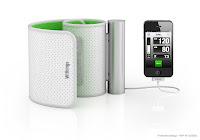As we transition to a full EMR system, one of the largest current challenges to our health care model is the need to share information at different sites: hospitals, clinics, nursing homes, tertiary care centers, etc. To help facilitate this interoperability between health care sites, standards are needed to guide us towards this end.
Even to begin to set such standards and/or goals towards interoperability, there first must first be a focus to aggregate patient data towards a unified standard. In setting the stage for this ‘consensus’ standard, all stake holders who represent some specific arm of medicine must come together and define the standards that allow them to work together across sites and distances.
Many of these respective groups that create standards have a tight relationship; some have absolutely no connection whatsoever. Thus, it’s easy to see this creates an inherent redundancy in standards in some areas of gap in others. Such redundancy and scattered coverage in standards have created the need for harmonization.
The graphic above represents the 43 major international health care standard developing organizations (SDO's) that are working together to create seamless interoperability. Many of these organizations have a need for assistance, and are free to join and have openings for volunteer opportunities. If you are interested in breaking into HealthIT, anyone of these organizations could mark the start of your transition towards this career.
As I continue to navigate through my HITECH program, I will continue to highlight many of these organizations and give you a bird's eye view of their role in the EMR interoperability equation. If you'd like to learn more about EMR transition and the mountain we are facing, click here.
About the author:
Mehdi Rais is a physician, medical lecturer, medical writer, and self-proclaimed “tech nerd.” When Dr. Rais isn’t honing in on his trades, he spends his time scouring publications and the web for the latest trends in technology in the medical field, new applications in Health Information Technology, and emerging legislative & regulatory changes in medicine.
Dr. Rais' interests are greatly focused in the realm of mobile computing and the use of cell phone technologies in the clinical setting. He received his Medical Doctorate from St. Christopher’s College of Medicine after spending his undergraduate years at the University of Texas at Dallas.
Dr. Rais can be reached on LinkedIn or followed at his blog here. Look for him on Twitter @DrMedBlog.







